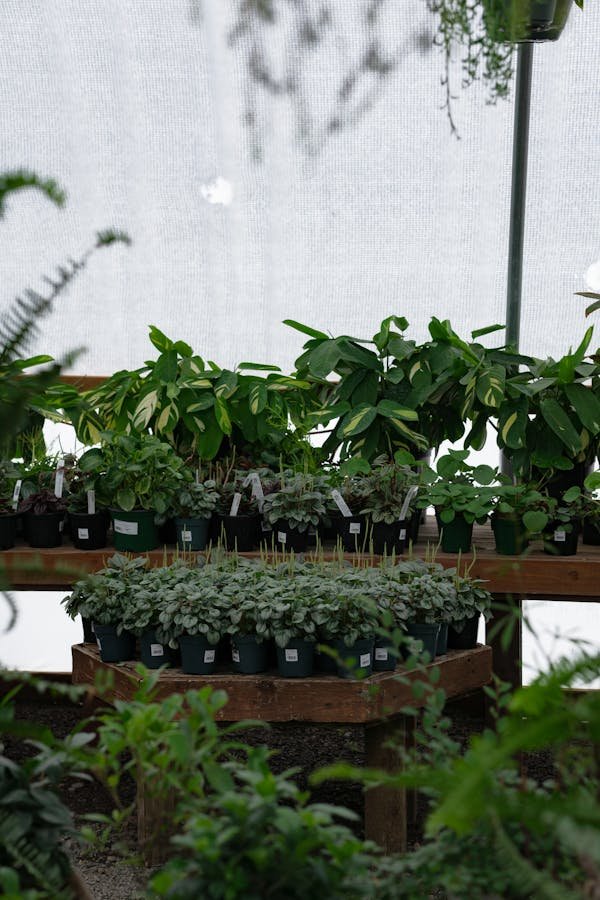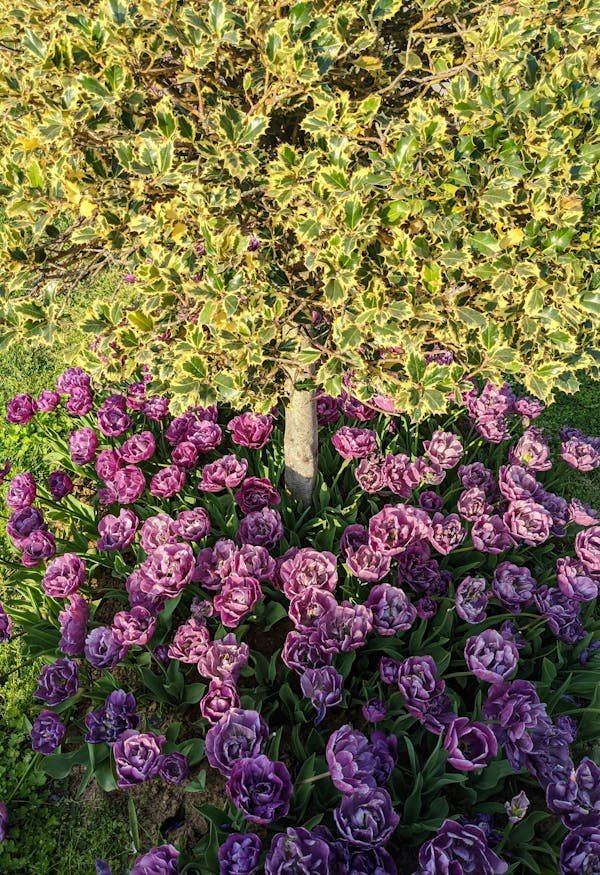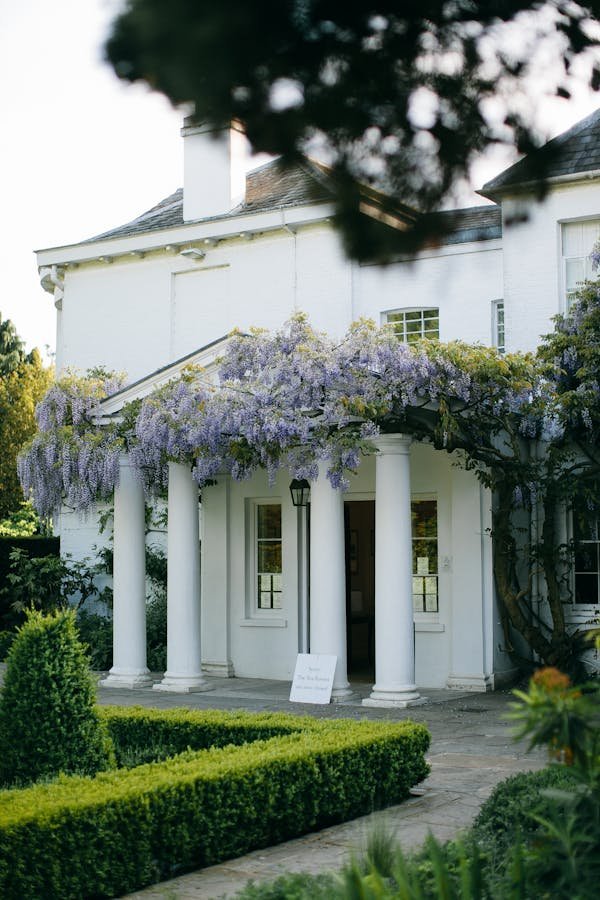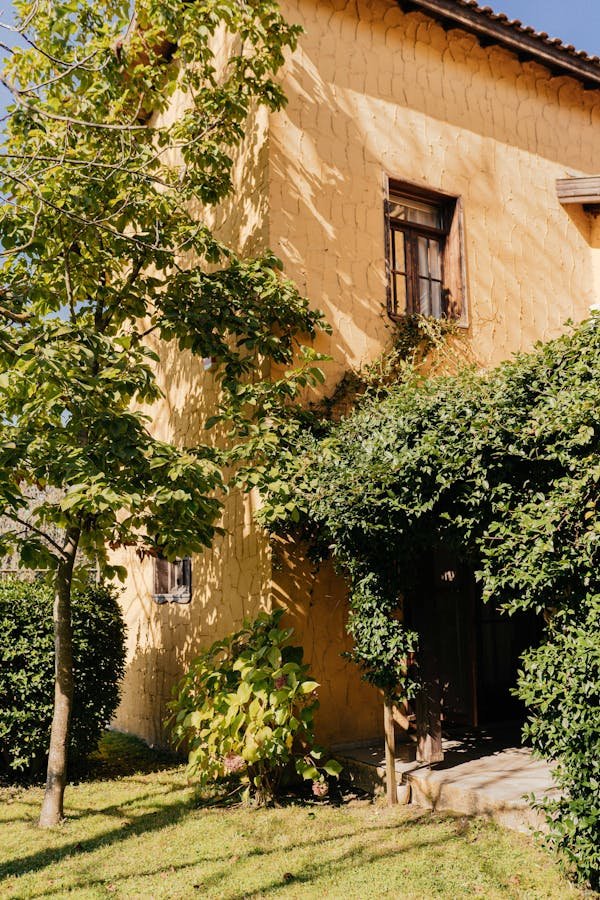|
Getting your Trinity Audio player ready...
|
Introduction
In front yard landscaping, larger isn’t usually better. Actually, a small front yard presents a special chance for creative expression, strong design statement creation, and control appeal enhancement without breaking the bank.
Smart landscaping can make your front yard a friendly and lovely place whether your residence is a suburban house, a townhouse in the city, or a small cottage. Inspired ideas, design principles, and professional advice will be walked through in this blog to help you design a little front yard bursting with personality and appeal.

1. Why is small front yard landscaping important? First impressions count
People’s first view is your front yard. Whether you intend to sell your house or welcome visitors, landscaping says volumes before you ever open the door.
Improves Your House’s Value
The National Association of Realtors claims that landscaping offers up to 100% return on investment. The resale value of your house can be much raised with even a small improvement.
Enhances daily enjoyment
A well-designed yard feels good as well as it looks. Your front yard can be a cause of pride and delight whether you are tending to flower beds or enjoying coffee on your front steps.
2. Design Fundamentals: Planning Your Space
Plan first, then buy or plant anything. A strong architectural basis helps even small yards.
- Track the amount of sun your yard gets.
- Check soil drainage and quality.
- Strong winds that might affect plant health should be noted.
- Do visitors or dogs regularly walk across this area?
Measure and map it out here

Scale your yard and sketch it. Mark permanent locations like:
- Paths
- Roadways
- Steps or porch platforms
- Mailboxes
This clarifies how everything interacts and space restriction
Specify Your Style
Consider:
- Are you drawn to modern, classic, or cottage-style gardens?
- You want something lush and layered or low-maintenance?
- Would you rather follow a natural, organic arrangement or symmetry?
3. Low-Maintenance Front Yard Landscape Designs

If you simply lack time or are not the type of gardener, try these low-maintenance, elegant yet useful ideas.
Choose lavender drought-tolerant plants.
- Cones of flowers
- Salvage
- Garden grasses for decoration
- Sedum
These plants do best with little maintenance and water.
2. Strategically reduce weeds using mulch as moisture
Gives a neat, complete appearance.
For several looks, use rubber mulch, gravel, or bark mulch.
Groundcovers or Artificial Grass
- Like a green appearance but do not want mowing?
- High-traffic areas would be perfect for artificial grass.
- Creeping thyme or clover provides richness with very little work.
4. Automated Drip Irrigation
Using a timer-based drip system will help you to effectively water your plants. Save time and money.
5. Ideal Plants for Little Front Gardens
A lush, vibrant landscape free from crowding depends on careful selection of plants.
- Flowering Plants—Add Pops of Color
- Hydrangeas, small versions like “Little Lime,”
- Dwarish roses
- Marines
- Zinnias
- Pansies for cooler times of year
- Boxwood shrubs and evergreens (year-round structure).
- Little Alberta spruce
- Sky Pencil holly
- Juniper Blue Star
Vertical Plants (Maximize Space) Climbing roses
- Great for trellises or fences, star jasmine
- Container Plants—flexible and moveable.
- Choose ceramic or wooden planters with:
Plants Successful Ingredients
- Nearest hydrangeas
- Dwarf citrus or small palm trees
6. Ideas for Hardscaping in Restricted Areas

Small yard design is much influenced by the non-plant components in your landscape or hardscaping.
1.Use Brick or Stone Pathways
Guide guests to your front door.
Break out green areas for aesthetic appeal.
2. Specify borders and add raised planter beds
Avoid compaction of the soil.
Add structure and verticality.
3. Use pea stone or gravel
Gravel creates low-maintenance, natural-looking walkways or borders. Perfect for:
- Zen-style garden designs
- Scenes from the southwest
- Cottage architecture
4. Add a little sitting space
- A seating nook even for a bench or bistro set
- Gives your yard more of a living space.
- promotes outdoor engagement.
6. Boosters for Creative Curb Appeal
With some creative changes, even the smallest yards can have a big impact.
1. Install outside lighting
- Line paths with solar path lights.
- Add uplighting for architectural or tree illumination.
- Add sconces or a front porch lantern.
2. Clean Your Entrance
- Put a strong color on your front door.
- Add symmetrically planned elements on both sides.
- Change your house numbers or mailboxes.
3. Apply color coordinate theory
- Match the outside colors of your house.
- Choose complimentary color combinations for containers.
- For consistency, repeat tones throughout.
4. Add Ornamental Details Hanging Baskets
- A little water fountain
- Seasonal yard flags or wreaths
7. Low-Cost Small Yard Landscape Design
Making a significant impact doesn’t depend on a large budget.
Do It Yourself Projects to Cut Costs
- Create raised planters of your own.
- Lay gravel paths rather than concrete.
- Turn old containers into artistic planters.
Select perennials. Year after year, perennial returns help to lower the need for replanting over annuals.
- Daylikes
- Hosta
- Black-eyed seasons
Start small then grow
Emphasize one focal point—the front porch, the walkway, or the flower bed.
Add more features either seasonally or according to budget.
8. Seasonal Landscape Ideas: Fall add pumpkins and chrysanthemums
- Festive décor could include hay bales and corn stalks.
- Plant tulips and daffodils, among spring-blooming bulbs.
- Winter Use evergreen garlands or wreaths.
- Fairy lights can wrap little trees or shrubs.
- Create winter-interest gardens using red twig dogwood or holly.
Spring: Refresh the mulch
- Plant perennials and shrubs.
- Add early blooming plants like hyacinths or pansies.
Summer: Choose heat-tolerant annuals
- Water in the morning or late evening.
- Keep shaded planters to stop wilting.
9. Errors to Steer Clear in Small Front Yard Planning Crowding in excess
Too many plants or décor items could clutter and disrupt a small yard. Keep to a few main ideas.
Ignoring Vertical Space
Remember walls, fences, and porch rails as well.
- Planters hung
- Mounted gardens vertically
- Towering constructions
Ignoring Maintenance Design with Future in Mind Unless you’re dedicated to the upkeep, avoid high-maintenance elements.
Mismatched Styles
To look put together, keep a consistent style. Combining modern sculptures with rustic flower beds, for example, might seem odd.
10. Actual Small Yard Makeovers before and after
#1: the urban townhouse
Before: cracked path, bare concrete steps, no vegetation.
Installed a brick path, included window boxes, and surrounded the doorway with dwarf evergreens.
Effect: friendly welcome in just two weekends
Before and after
#2: The Suburban Makeover
Before: patchy grass without design, old porch
Added mulch beds, vibrant perennials, painted the front door, and put solar lights in place.
Neighbors stopped by simply to say how amazing it looked!
Before: Overgrown shrubs, dark entry; before and
#3: cottage charm
After: planted a mix of lavender and daisies, trimmed hedges added a white gravel path.
As a result, the front yard is magazine-worthy and radiates warmth.
Questions: Small Front Yard Landscaping
1. How can a small front yard seem to be more expansive?
Create depth and the illusion of space by using design devices including vertical plants, curved walkways, and layered planting. Moreover beneficial is maintaining a neat layout and avoiding clutter.
2. Which American small front yard plants would be best?
Choose low-maintenance, small, easy plants including boxwood, dwarf hydrangeas, lavender, coneflowers, and creeping thyme. For more adaptation, pick native species.
3. How can I budget my front yard’s landscaping?
Start small with do-it-yourself gravel paths, garden boxes, and perennials returning annually. Use mulch for a polished, reasonably priced look; repurpose containers.
4. What are some smart low-maintenance landscaping ideas?
To save mowing, pick drought-tolerant plants, set up drip irrigation, use mulch to control weeds, and think about synthetic grass or ground covers.
5. In a small yard, could I use hardscaping?
Of course! Without sacrificing too much space, elements including stone paths, raised beds, benches, and decorative gravel can improve style.

Final Thoughts
Small front yard landscaping is about style, smart planning, and personal expression rather than scale.
The right design will turn even the smallest area into a show-stopper whether your preferred style is the vibrant garden, simple layout, or lush green oasis.
Start with a vision: Select products and plants fit for your way of life. For visual interest, layer form, color, and texture. Go vertical or include hardscape components without thinking twice. Above all, claim it as yours.














